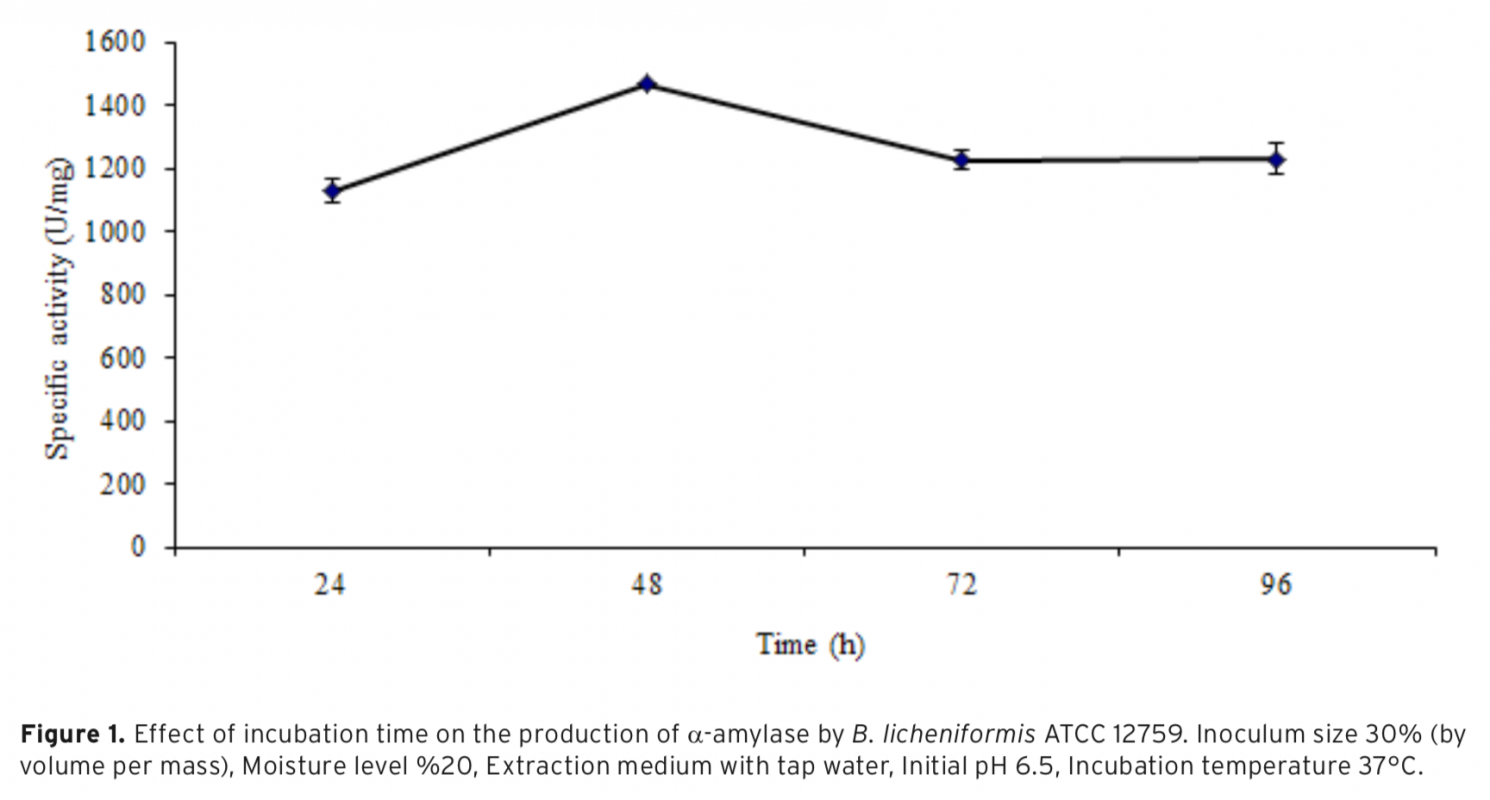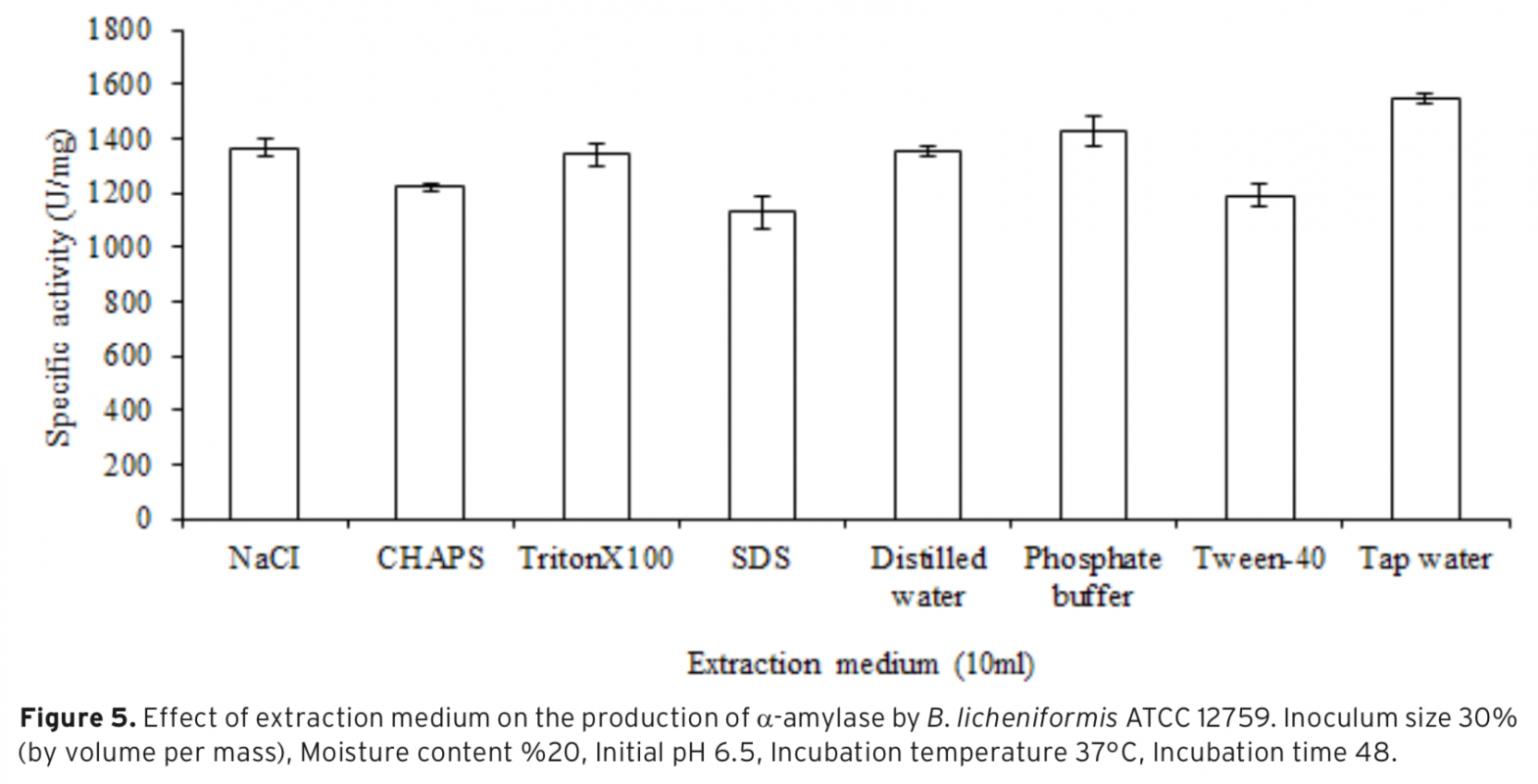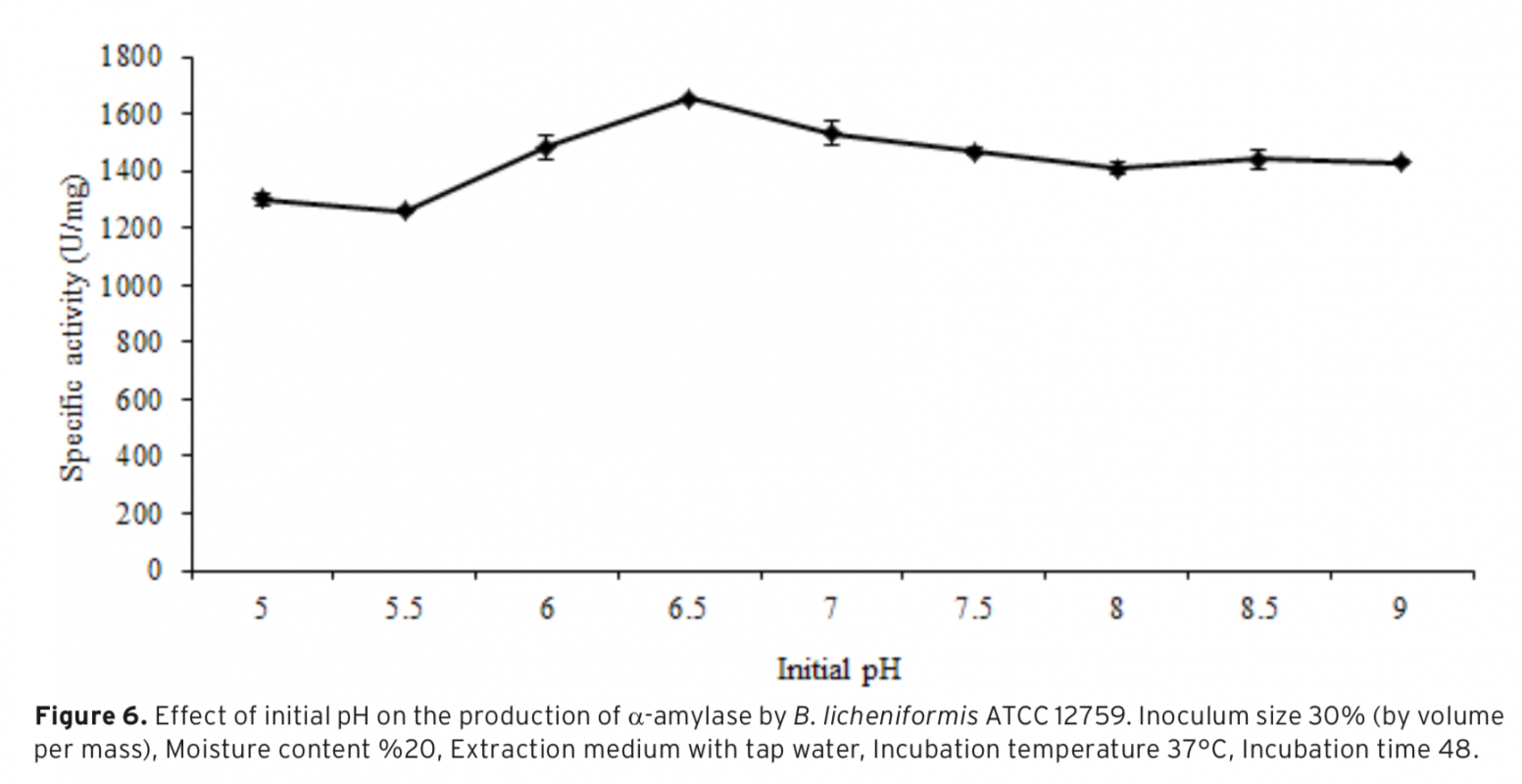The aim of this paper is to study influence of the certain production parameters of α-amylase by Bacillus lic- heniformis ATCC 12759. Various agroresidues as substrate were studied for enzyme production. The highest enzyme production was expressed with rice bran as units per mass of dry substrate (1399.8±6.6 U/mg). Optimization parameters of α-amylase production were carried out with solid state fermentation (SSF). Solid waste from rice bran used as the basic nutrient source. Supplementation with carbon and metal salt sources decrased the enzyme production. Certain fermentation parameters involving incubation time, incubation temperature, inoculum level, moisture level, extraction medium, initial pH and medim volume were studied separately. Maximal amount of α-amylase production (2094.9±53.1 U/mg) was obtained inoculum level 30%, moisture level 20%, initial pH 6.5 at 37°C for 48 h with supplementation of ammonium cloride.
Bu çalışmanın amacı Bacillus licheniformis ATCC 12759’dan α-amilazın belirli üretim parametrelerinin etkisini incelemektir. Enzim üretimi için substrat olarak çeşitli tarımsal atıklar çalışılmıştır. En yüksek enzim üretimi kütle başına (1399.8±6.6 U/mg) pirinç kabuğu ile ifade edildi. α-Amilaz üretiminin optimizasyon parametreleri katı faz fermantasyonu (KSF) ile gerçekleştirildi. Katı atık olarak pirinç kabuğu temel besin kaynağı olarak kullanıldı. İnkübasyon zamanı, inkübasyon sıcaklığı, inokülum oranı, nem oranı, ekstraksiyon ortamı, başlangıç pH’sı ve ortam hacmini içeren belirli fermantasyon parametreleri ayrı ayrı çalışıldı. α-Amilaz üretiminin en yüksek miktarı (2094.9±53.1 U/mg) 48. saatte 37°C’de başlangıç pH 6.5 %20 nem oranı ve %30 inokulüm oranı ile amonyum kloridin eklenmesi ile elde edilmiştir.




Download Article in PDF (184.0 kB)